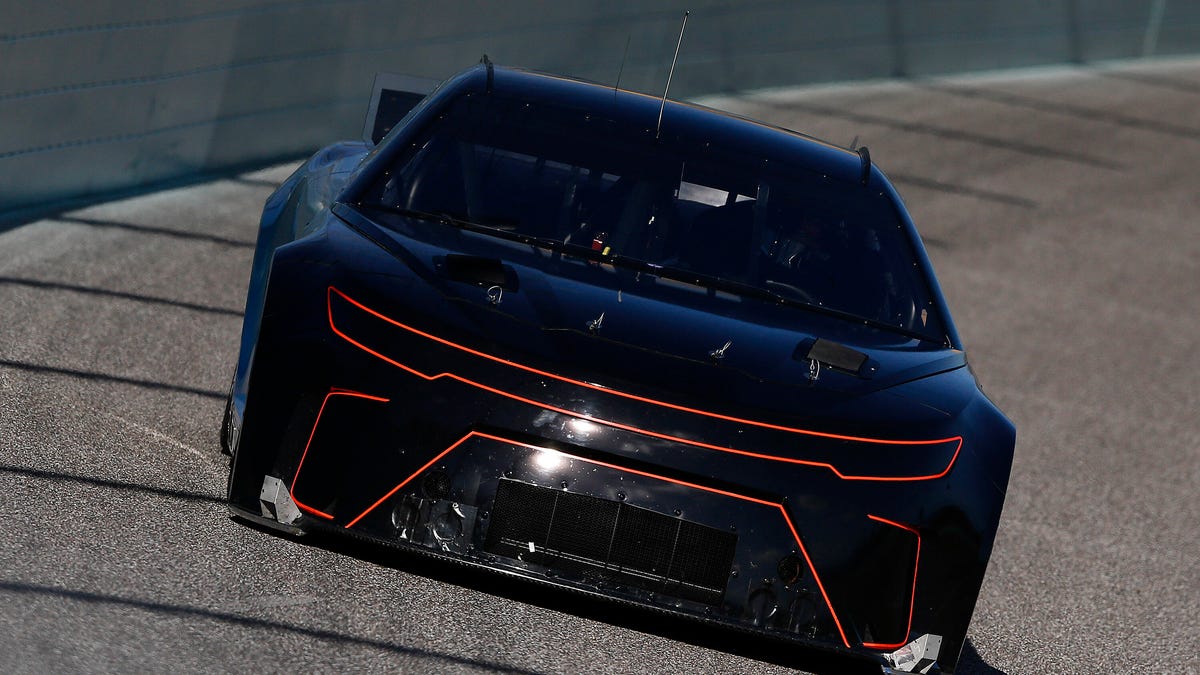NASCAR's Next-Gen race car has big chassis and design changes
The new Cup Series race cars look pretty badass while offering a number of welcome improvements.
NASCAR is getting a major glow-up for the 2022 racing season with the Cup Series Next-Gen race car. Debuting Wednesday, the new cars feature a revised suspension and gearbox as well as new features that bring NASCAR back to its stock car roots.
Keep in mind that NASCAR's idea of "stock" and the general public's definition may be a bit different. It's not like a Toyota Camry with a V6 is competing with a Chevrolet Camaro with a supercharged V8. Instead, each car's body needs to conform to certain specifications and each car runs an old-school V8 pushrod engine. The individual race teams can tweak those engines themselves but in the end they all make around 700 horsepower.
Many of the Next-Gen car's changes are meant to give drivers more control while racing. Perhaps the biggest change here is a switch to an independent rear suspension setup. NASCAR says it wants to be more relevant and relatable to what is currently available from its OEM partners Chevrolet , Ford and Toyota . With the Ford Mustang switching to IRS in 2015, it makes sense for these Next-Gen cars to make the change as well. A more sophisticated IRS setup should greatly improve the Cup cars' handling.
The other major change is a new aero package, the result of a domino effect initially meant to keep the car cool. The current cars have very little air running underneath them. That's great for the center of gravity, but it means the cockpit can reach up to 150 degrees Fahrenheit. By raising the car an inch and a half, the cockpit stays cooler, resulting in a healthier, more alert driver, but downforce is reduced. To counteract the loss of downforce, the Next-Gen cars have full underbody protection with a front splitter and rear diffuser. It doesn't fully make up for all the downforce lost by the higher ground clearance, but larger Goodyear tires bring more mechanical grip to the table as well. The diffuser also keeps the air coming off the rear from getting disturbed, resulting in less wind turbulence for cars following closely behind.
A new aero package adds downforce and keeps the air from being too disturbed off the back end.
Elsewhere, the old four-speed H-pattern manual transmission is nixed for 2022 in favor of a five-speed sequential transmission with a reverse gear. NASCAR says this transaxle is flexible enough to support electrification in the future, most likely in the form of a hybrid powertrain.
Larger 18-inch aluminum forged BBS wheels will replace the old 15-inch steelies, making room for a bigger braking package. When racing, these cars travel in excess of 200 mph, so better brakes are a welcome addition.
The Next-Gen car's new hood scoops push the radiator exhaust up and out over the top of the car instead of going out the bottom, like it did before. This not only aids with the aforementioned cockpit cooling, but also helps the engine to run at water temperatures over 240 degrees Fahrenheit. Further, the front and rear clips are detachable so crews can easily fix damage during a race. Currently teams need around 18 cars for a full Cup season, but NASCAR hopes this design element will reduce that number by more than half.
Just looking at the new cars and you'll notice the more coupe-like silhouette. The roof is lower, the track is wider and the tail is much shorter. No, it won't look like a stock Toyota Camry is out there racing, but the new roofline gives the cars a bit more grace on the racetrack.
Finally, all NASCAR Cup cars will have onboard cameras so fans can check out the live feed from their favorite driver. Cameras will also be placed on the outside of cars at each race, not just at certain tracks. Fans can already listen to driver audio during live races and the extra visual from on board cameras should only help fan engagement.
NASCAR says the Next-Gen cars will debut at the 2022 Daytona 500 in February.


